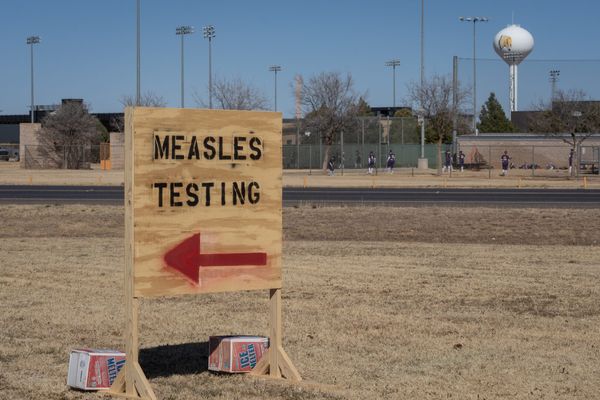
Dozens of states across the US began the weekend grappling with historically high spring temperatures, as a blistering heatwave that has scorched the country’s south and west moves east.
The early arrival of sweltering weather, before what’s expected to be another hot, dry summer, is forecast to break or tie roughly 130 heat records for this time of year, with temperatures between 20F and 30F above average in the mid-Atlantic and north-east.
But a dip in the jet stream will maintain much cooler than normal temperatures for the Rockies into the Plains. The National Weather Service predicts in Colorado it may “look and feel like a return to winter,” though the cold blast won’t be enough to douse raging wildfires farther west.
More than 120 million Americans are in the crosshairs of the heat, raising fears of health risks for the most vulnerable, outdoor workers and those who do not have access to indoor cooling. The National Weather Service issued a special statement cautioning residents to remain vigilant for signs of heat illness, take breaks inside when possible, and stay hydrated.
“It is a little early so everything might not quite be where it would be if we were in the middle of summer,” said Marc Chenard, a meteorologist with the National Weather’s Service’s Weather Prediction. “It is really these first couple events when everyone is getting used to it and just understanding what they need to do.”
Large swaths of the east are expected to break records for heat, including in Washington, forecast to hit 96F (35.5C) on Saturday, and in Boston, which could get up to 93F (34C).
A half-marathon held Saturday in Brooklyn vividly illustrated the brutality of the conditions. One runner collapsed and died, and six others were brought to the hospital, as authorities warned that hot temperatures and high humidity could trigger heat illness, the Associated Press reported, citing local officials.
In Baltimore, Maryland, where the 147th Preakness Stakes is set to run at 7pm, forecasted temperature at the start of the prestigious horse race is 91F, slightly below the high of 94F and a full 18 degrees above normal.
Already, Texas has been pummeled by the heat, which delivered Dallas’s hottest May in history, and the south-west has cooked as strong winds fanned wildfire risks throughout the drought-stricken region.
On Thursday, the National Oceanic and Atmospheric Administration’s Climate Prediction Center said nearly the entire continental US would experience above average temperatures this summer. La Niña conditions favored those conditions through the northern hemisphere’s summer, into the fall and early winter, with increased rain in the north-west, the center said this month.
A regulating authority that oversees the health of the nation’s electrical infrastructure, NERC, warned that the extreme temperatures and ongoing drought could cause the power grid to buckle across vast areas of the country this summer, potentially leading to electricity shortages and blackouts.
The body, formally called the North American Electric Reliability Council, said in its 2022 Summer Reliability Assessment that high temperatures would cause the demand for electricity to rise while drought conditions would reduce the amount of power available to meet demand.
“Persistent, extreme drought and its accompanying weather patterns, however, are out of the ordinary and tend to create extra stresses on electricity supply and demand,” NERC’s Mark Olson said.
Parts of Europe, too, are experiencing mid-summer heat a month before spring officially turns to summer. In southern Spain, high temperatures pushed close to 104F in Andalusia.
“This episode is very unusual for mid-May and could be one of the most intense episodes in the last 20 years,” panish weather official Ruben del Campo said.
Heat is a silent killer, often responsible for more deaths than higher-profile disasters like floods, hurricanes or tornadoes. And the rising toll heat has been taking is expected to worsen as the world warms because of the climate crisis.
Frequent, intensifying heatwaves result from the climate crisis, with models indicating that there could be between 25 and 30 extreme events a year by mid-century – up from an average of between four and six a year historically. They are also expected to cover wider swaths of land than before.







